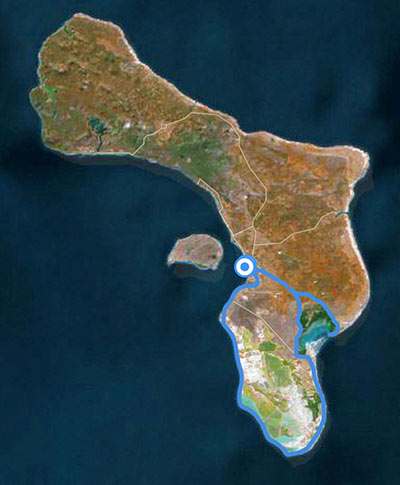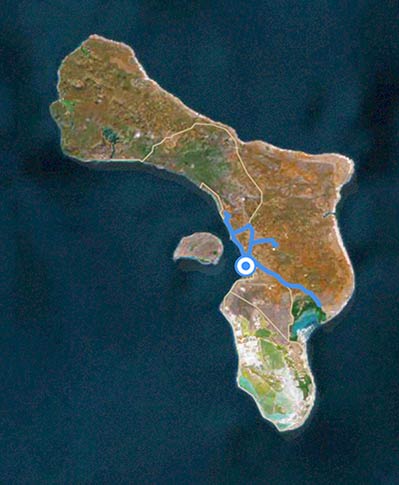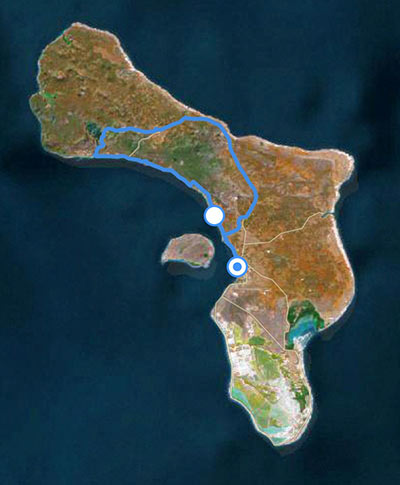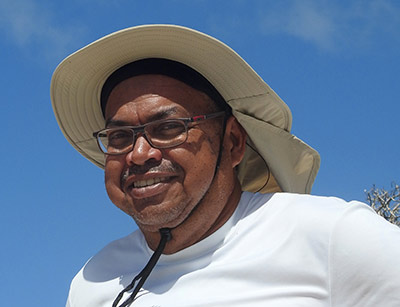Southern, Interior, Northern, or Custom Birding Tours
Available year-round by appointment
About the Birding Tours
A variety of birding tours are available to meet the wishes of the tour participants.
Elect to go south, into the interior, or north, or plan a customized itinerary.
All tours are conducted on a private basis, so capacity is limited. It is recommended that reservations be made early to avoid disappointment.
The Southern Tour
The southern tour of Bonaire is Susan’s favorite for photography. Because it is flat and open, there is usually great line-of-sight with the birds, so it offers excellent photographic opportunities. South is particularly nice in the afternoon when the sun is shining onto the shoreline and the saliña (where many of the birds are found). The southern tour is mostly a driving tour, and stops are made when birds are located.
Western Hemisphere Shorebird Reserve Network site.
This area in the south of Bonaire has been declared a WHSRN site, one of only two in the Caribbean region. More than 20,000 shorebirds of 17 differing species visit the Pekelmeer each year. This includes a large concentration of shorebirds, with 1% of the biogeographic population of Short-billed Dowitcher (Limnodromus griseus griseus/hendersoni) and the threatened rufa subspecies of Red Knot (Calidris canutus rufa).
Birds you may expect to see on the southern tour.
In the south of Bonaire, along the Cargill salt flats, there are a variety of birds commonly observed, including herons and egrets, flamingos, ospreys (more prevalent during the winter months), seabirds, and shorebirds. During spring and fall migrations, migrant shorebirds can be found as well.
The Interior Tour
The interior tour of Bonaire is a favorite one for those birders who are looking for diversity. A prime component of this tour is a hiking tour of Bonaire’s wastewater treatment plant, the one location on the island which offers a continual source of fresh water. Because of this, the location offers the best avian diversity on the island.
Birds you may expect to see on the interior tour.
In this location, you may see migratory birds or those that over-winter on Bonaire, warblers, ducks, herons, egrets, and usually some flamingos, but not in quantity. It’s also possible to observe Ospreys, Merlins (both more prevalent during the winter months), and shorebirds. Bonaire’s Brown-throated Parakeet might be found in this location as well.
Prepare for hiking.
This is mainly a hiking tour and the trails (where there are trails) are not groomed, but natural. During the hike, you’ll be brushing past thorn trees, and also walking upon a trail with thorns.
 Sturdy closed shoes are mandatory, sneakers do not have a thick enough sole, and thorns could go through them. Be sure to wear thick-soled hiking shoes and long pants to avoid scratches. Long sleeves are not mandatory but can be of value to prevent scratches.
Sturdy closed shoes are mandatory, sneakers do not have a thick enough sole, and thorns could go through them. Be sure to wear thick-soled hiking shoes and long pants to avoid scratches. Long sleeves are not mandatory but can be of value to prevent scratches.
The Northern Tour
Going north, it is possible to see many of the same birds, but because north is hilly and much more forested (especially after the rainy season October through January) there is not the same line-of-sight with many of the birds, thus making good images more difficult. Birds may be partially hidden in foliage or further away.
Also, the road on the northern tour is narrow and twisty, so spotting a bird, and pulling off to the side of the road to observe and photograph it, is, in most cases, simply not possible. Instead, for the northern tour, several birding hot-spots will be selected where we will quietly sit to see what comes to visit–it’s a different style of birding from the southern tour.
Birds you may expect to see on the northern tour.
In the north, one can expect to see herons and egrets, flamingos, ospreys (more prevalent in the winter months), Crested Caracaras, parakeets, terrestrial birds, and, depending upon the time of day, Bonaire’s Yellow-shouldered Amazon Parrot, locally called the “lora.”
Custom Tours
Some birders or photographers have only a single species in mind, or a small wishlist of species, that they wish to observe while on Bonaire. For these tour participants, the best option is a customized tour. While Susan will do her best to find your desired bird, do be aware that, nature being what it is, no sighting can be guaranteed.
Many visitors who bird while on Bonaire wish to see Bonaire’s Yellow-shouldered Amazon Parrot, which can be a life bird for many. Depending upon the time of day, parrots may be observed, but a custom tour is then the best option.
Additionally, there are some birding hot spots on the island which do not have convenient access during either the southern or northern tour, such as the fresh-water ponds at Bonaire’s wastewater facility, which is Bonaire’s most active hot spot for a variety of species. If any of these other locations are desired, a custom itinerary can be planned to accommodate them.
What to bring for your Birding Tour
Bonaire’s tropical sun may be overly bright for many, so it is suggested that you bring a big floppy hat to shade your face and the back of your neck. Sunglasses may also assist with glare from the sun.
A lightweight long‐sleeve shirt, such as a rash guard, is recommended to avoid sunburn. If you have uncovered skin, do be sure to wear a reef‐safe sunscreen.
In most cases, annoying insects (mosquitoes, gnats, or no‐see‐ums) are not a problem. However, on days of light wind, they can become a nuisance. Bug spray will be available, but if you have a favorite brand, do pack it. If you are visiting during the light‐wind months of September and October, it is also recommended to pack a bandana, which can be placed over the nose and mouth if the insects are overly annoying.
If you plan on photographing, please bring your longest lens capability. All types of cameras, even smartphones, can be used on the tour, but being able to zoom in will definitely enhance your images.
Each Birding Tour includes:
- Each participant is provided with an environmentally friendly (non-plastic) water bottle, filled with iced tap water.
- Complimentary juice and light snacks.
- Pick-up and drop-off at your accommodations.
- Vortex Diamondback HD 8×42 Binoculars are available for each participant’s use.
- A spotting scope is available for use.
- Field guides are available for use. If you wish to make notes, feel free to bring your own.
- Government sales/service tax.
Pricing
Three-hour or four-hour tours are offered because pricing is important to some people. The difference between the two tours is that normally on the four-hour tour, the entire southern half or northern half of the island can be covered in a leisurely manner.
On the three-hour tour, the route will go as far as timing allows, and then participants will be returned to their accommodations. Unless really moving in a hurry, it’s normally not possible to complete either of the loops in three hours.
| Southern, Interior, Northern, or Custom Tour | Three-hour tour | Four-hour tour |
|---|---|---|
| One or two persons | $270.00 | $360.00 |
| Add in for each additional person, up to a maximum of two additional participants | $135.00 | $180.00 |
The maximum is four persons per tour so that all participants may receive the proper attention to their photographic skills if so desired. Additionally, limiting the number of participants increases the likelihood that the group can enjoy the birds for longer periods without scaring them away.
Please note that tours can be conducted in English or Dutch.
Also, please note that December through April are the busiest months of the year with many visitors arriving. If you are visiting during those months, and wish to enjoy a birding tour, it is recommended that you make your reservation as far in advance as possible, to avoid disappointment.
Get In Touch
Get in touch with Susan to check availability for the dates you are visiting Bonaire.
Consent: By using this form you agree with the storage and handling of your data by this website.





